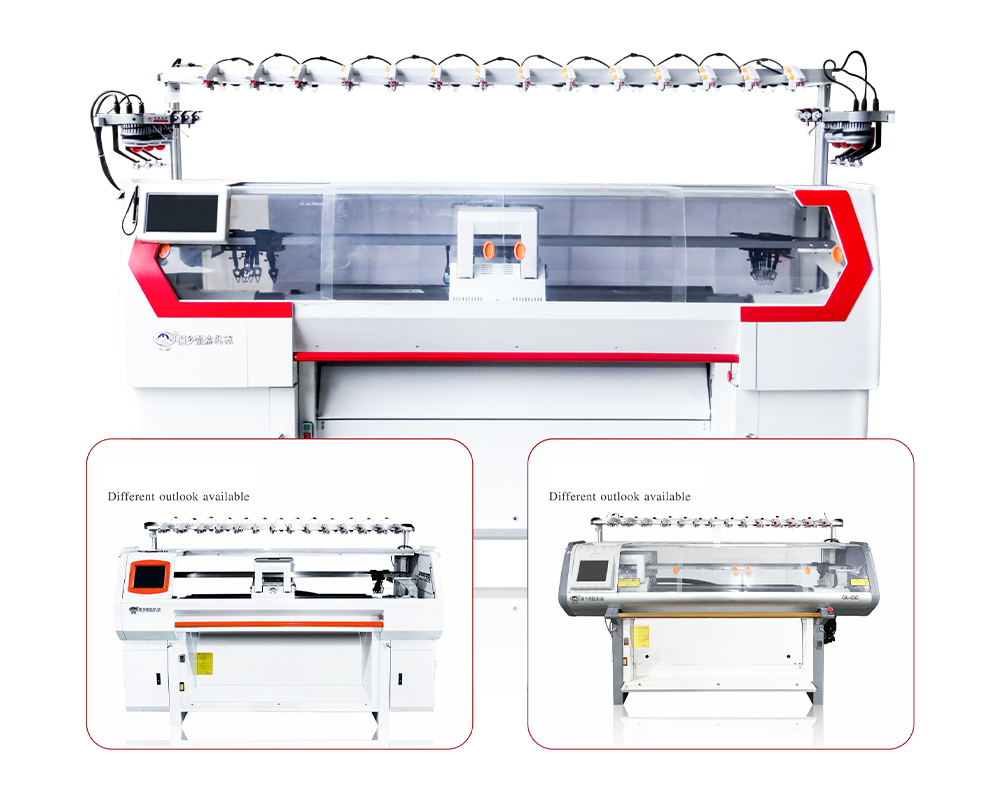Tongxiang Qianglong Machinery Co., Ltd. is high-tech China wholesale computerized flat knitting machine manufacturers, specialized in designing, developing, and manufacturing Knitting Machinery..
The level of automation in whole garment computerized flat knitting machines is quite high compared to traditional knitting methods. These machines are designed to streamline and automate various aspects of the knitting process, from pattern creation to garment
production. The level of automation can vary depending on the specific machine's model and features, but in general, they offer the following levels of automation:
Pattern Design and Programming:
Automation begins with the design and programming of knitting patterns. Users can create or import digital patterns into the machine's software, eliminating the need for manual charting or pattern drafting.
Pattern Transfer:
Once the pattern is programmed, it is digitally transferred to the machine, often through a computer interface. This eliminates the manual process of setting up patterns on traditional knitting machines.
Yarn Feeding and Tensioning:

Whole garment knitting machines have automated yarn feeding systems that control the tension and feed rate of the yarn. This ensures consistent yarn tension throughout the knitting process.
Knitting Process:
The knitting itself is highly automated. The machine's needles, bed, and carriage are controlled by computerized systems that execute the programmed pattern. These machines can knit, purl, increase, decrease, and perform other knitting techniques automatically.
Color Changes and Complex Patterns:
These machines can automatically change colors and execute complex colorwork patterns without manual intervention. This is especially valuable for producing intricate designs and color gradients.
Shaping and Garment Construction:
Whole garment knitting machines are capable of shaping garments by increasing or decreasing stitches as needed. They can also create sleeves, collars, and other garment components without the need for separate knitting and sewing.
Seamless Joining:
One of the key features of whole garment knitting is the seamless construction. These machines automatically join different parts of the garment as they knit, eliminating the need for sewing seams.
Cutting and Finishing:
Some advanced models of whole garment knitting machines can also automate the cutting of finished garments from the machine and include additional finishing functions.Quality Control:
Some machines incorporate sensors and quality control mechanisms to detect and address issues such as dropped stitches or yarn breaks automatically.
Remote Monitoring and Control:
Many modern machines offer remote monitoring and control capabilities, allowing operators to manage and troubleshoot the machine from a computer or mobile device.
Production Data and Reporting:
Whole garment knitting machines often include data logging and reporting features, providing insights into production metrics, yarn usage, and machine performance.It's important to note that while these machines offer a high degree of automation, they still require skilled operators to set up patterns, select appropriate materials, and
perform routine maintenance. Additionally, the level of automation can vary between different machine models and manufacturers, so businesses should choose a machine that aligns with their specific production needs and capabilities.

 English
English 简体中文
简体中文
 Chinese
Chinese English
English











